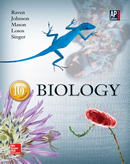1 EMF gene is mutated (thereby losing function), flowering occurs exceptionally early. What does this suggest about the effect of the EMF protein?A) Flowering is a function of leaves converting into petals, and loss of the EMF gene causes petal formation. B) The shoot apical meristem's natural inclination is to form vegetative structures and is modified by the EMF protein to become a flower. C) Phase change is reversible, depending on how much EMF protein is available. D) Plants have juvenile and mature stages which are genetically controlled. E) The "default" state of a shoot apical meristem is to form a flower, and the EMF gene creates a protein that suppresses this. 2 A) They are believed to have evolved from stems. B) They offset the maturation of stamens and pistils to prevent selfing. C) They mature stamens and pistils at the same time. D) They only occur in biennial plants. E) They evolved first in the gymnosperms. 3 A) multi-nucleated pre-protoplast cells B) mature differentiated cells C) a protective covering on a developing embryo D) the final stage of adult plant development E) an undifferentiated mass of cells 4 A) In the second year, the storage tissues (such as a tap root or thickened leaves) are depleted as sources of energy to drive flowering. B) An additional year will result in much secondary growth that makes the product woody and undesirable for consumers. C) A large number of biennials can't over-winter. D) They are grown for the food that can be derived from their leaves or roots. These are richest in nutrients after the first year of growth. E) Commercial farmers prefer to be conservative. For this reason they take profits in hand after the first year rather than risk a possible loss one year later. 5 A) vernalization B) morphogenesis C) apomixes D) cold setting E) autonomous regulation 6 A) production of the first root B) acquisition of competence to release pollen C) acquisition of competence to respond to flowering signals D) acquisition of competence to proceed from zygote to embryo E) initiation of body plan development 7 A) The equatorial plant would require sudden high temperatures to induce phase change for flowering, while the Canadian plant would require cold temperatures. B) The equatorial plant would be day neutral while the Canadian plant would respond more strongly to changes in day length. C) The equatorial plant would be a long-day plant, while the Canadian plant would be a short-day plant. D) The equatorial plant would be a short-day plant, while the Canadian plant would be a long-day plant. E) There is no way to predict what factors might influence flowering in the plants. 8 A) Floral parts have become more distinct and more numerous. B) There's been a reduction in the number of floral parts, but they have gradually become more radial. C) Bilateral symmetry has grown more common in advanced plants while the number of floral parts has increased. D) Separate floral parts have grouped together or fused, while the number of whorls has increased. E) Separate floral parts have grouped together or fused together, while bilateral symmetry has grown more common. 9 A) The high amount of sugar in the nectar would deplete the reserves of many plants after they produced only a few flowers. B) Many nectaries would dry out, creating sticky traps that would bind up the pollinators, preventing them from visiting other flowers. C) Insect pollinators would become ill from consuming too much nectar and move to another location. This would limit the amount of cross-pollination available to the plants. D) Many insect pollinators would consume all the nectar they need at once and then have no need to visit and cross-pollinate other flowers. This would limit the amount of cross-pollination available to the plants. E) Nectar contains a lot of water. So producing large amounts of nectar would dehydrate the plants and result in wilting. This in turn would limit further pollination. 10 A) a sperm cell and two tube nuclei B) megaspores C) the female gametophyte D) two sperm cells E) the egg cell 11 A) runners B) rhizomes C) suckers D) adventitious plantlets E) runners, rhizomes, suckers, and adventitious plantlets 12 A) perennial B) annual C) biennial D) dormant E) tropical 13 A) photoperiod B) cold C) heat D) light E) dark 14 A) callus B) adventitious plantlet C) clone D) protoplast E) megaspore 15 A) the receptacle B) the calyx C) the corolla D) the androecium E) the gynoecium 16 A) Microgametophytes are found within megagametophytes. B) The embryo sac is the megagametophyte. C) Megagametophytes are pollen grains. D) Female gametophytes are microgametophytes and male gametophytes are megagametophytes. 17 A) true B) false 18 A) 2 B) 4 C) 8 D) 16 19 A) One sperm fuses with two eggs. B) Two sperm fertilize two eggs of which only one survives to form a zygote. C) One sperm fertilizes the egg while another fuses with the two polar nuclei of the embryo sac. D) Two sperm fuse with one egg. 20 A) Cell wall formation begins on the side of the cell that receives the most light during the beginning of day light and wraps around the cell toward the side that receives the least light B) The direction in which cells divide determines the placement of the cell wall. C) The orientation of microtubules is critically important to the orientation of the cell plate which, in turn, determines the orientation of the cell wall. D) The orientation of cellulose fiber is critically important to the orientation of the cell plate which, in turn, determines the orientation of the cell wall. 21 A) development of a food supply B) photosynthesis C) development of the fruit surrounding the seed D) development of the seed coat





